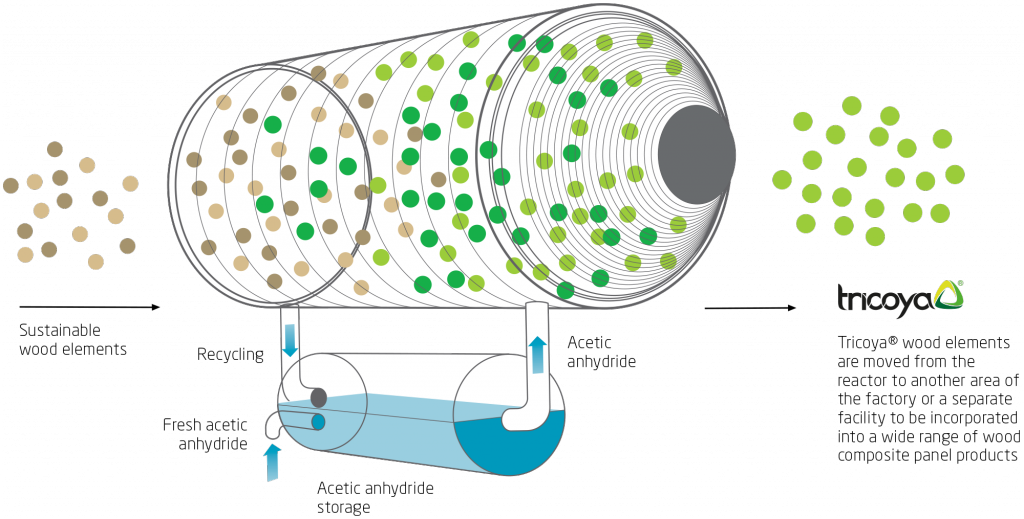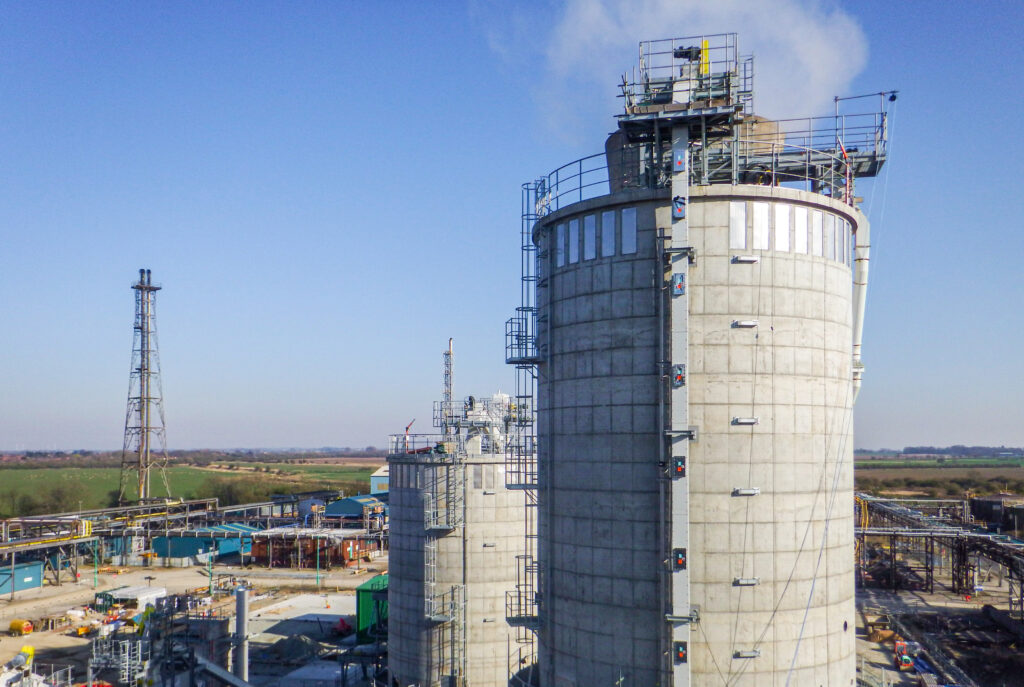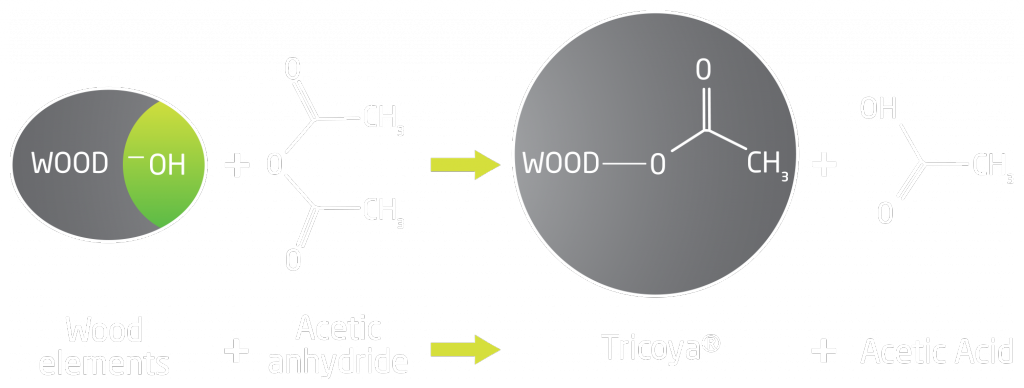 Revolutionary Technology
Revolutionary Technology
The technology behind Tricoya® wood elements is based on wood acetylation, a process that has been studied by scientists around the world for more than 80 years.

This method of improving wood has been proven to deliver such superior performance that it has long been used as the “gold standard”. Tricoya® combines this science with years of proprietary research and investment.
Why wood shrinks
Tricoya® was developed by challenging the most fundamental reason for wood swelling – water absorption onto hygroscopic wood fibres due to the presence of free hydroxyl groups (chemical formula: -OH). Free hydroxyl groups absorb and release water according to changes in the climatic conditions to which the wood is exposed, causing it to swell and shrink. It is also believed that the digestion of wood by enzymes initiates at the free hydroxyl sites, one of the principal reasons that wood is prone to decay.
The acetylation process
Acetylation is a revolutionary sustainable process which has been proven on Accoya® solid wood since 2007. It prevents water absorption in wood by exchanging the hydroxyl groups with acetyl groups (chemical formula: -COCH3) through a reaction with acetic anhydride, which comes from acetic acid, or vinegar in its dilute form.
Structural transformation
The effect of altering the wood’s chemical structure through acetylation is to create a new product that is modified right through the cross section, leaving it more dimensionally stable and, because it is no longer digestible, extremely durable. By contrast, other comparable treatments merely insert chemicals, such as oils, ammonia or metal compounds, into the wood, improving durability but not dimensional stability.
An entirely natural process
Acetyl groups are already naturally present in all wood species as well as in humans and other mammals. This means that the manufacturing process adds nothing to the wood that does not already naturally occur within it, resulting in an end product that adds no toxins to the environment.

 World’s first Tricoya Plant
World’s first Tricoya Plant
Construction underway for a “first of its kind” Tricoya® plant in Hull (United Kingdom) with a target annual production capacity of 30,000 metric tonnes.
There is also a feasibility evaluation underway with PETRONAS Chemicals Group Berhad for an integrated acetic anhydride and Tricoya® production plant in Malaysia. Decision to invest in plant to follow after commencement of Hull plant operations


